University of Miami professor says U.S. seafood market needs to embrace ‘plate-sized’ fish for aquaculture to become profitable

In aquaculture, production time is often inversely proportionate to profit — a long time to grow a fish to the preferred market size equals higher costs and, as is often the case, more waste. But if fish producers were incentivized to grow fish to a certain size — say, the size of the common dinner plate — then production cycles could be measured in months, not years.
Daniel Benetti, Professor and the Director of Aquaculture at the University of Miami’s Rosenstiel School of Marine and Atmospheric Science, says that the U.S. market, where big, thick fillets are in demand, needs to embrace smaller fish — say, 1 pound to 1 and a half pounds each. And he’s got some candidate species in mind that might be surprising.
The Advocate touched base with Benetti to talk all things aquaculture shortly after he presented during a panel presentation at the National Fisheries Institute’s Global Seafood Market Conference in his home town of Miami in January.
What do you feel is the growth potential for aquaculture in the United States, with all its regulations and obstacles?
As we’ve been collectively saying for the last three decades, the potential is astounding. We have the land, the coastal water, the Gulf of Mexico, and the largest exclusive economic zone in the world. There are a lot of constraints as well. Historically, there hasn’t been much interest from either production or investment perspectives. It’s been cheaper and more convenient to buy from abroad — let others produce, we don’t have to do it ourselves, and it’s relatively cheap to buy from all over the world, so let them deal with the environmental problems that could be linked to aquaculture. We just purchased the fish, and every country wants to sell to us and that continues to be the case.
However, progressively, it has become a matter of national security. Most producing countries are keeping their high-value products for themselves. Case in point, China. It’s become obvious that we have to do something here. The investment sector is finally waking up to the fact that we need to double what we’ve been producing for seafood in the next 10 to 15 years. We know where it’s going to come from: aquaculture. Having said all that, we still face huge challenges here in the United States. Start with the regulatory process.
What did you think about NOAA’s plan to allow offshore aquaculture in the Gulf of Mexico?
I was once invited to speak at the Gulf Fisheries Management Council. They were debating in Biloxi, Miss., a long time ago whether or not we should allow offshore aquaculture in the Gulf. I said we shouldn’t be discussing whether we should allow it or not. We should be discussing what kind of incentives we’re going to provide to facilitate making it it happen.
At this stage, the Gulf is still very challenging from all perspectives, particularly in terms of site selection. If you had a checklist for aquaculture, the Gulf doesn’t come up as a suitable place for aquaculture. There’s problems with waves, hurricanes, shallow depths, costs, legal aspects, temperature, oceanographic parameters — you name it. If you put all the pieces together we’re still not there.
I’ve changed my mind, because I spent 20 years going all over the United States promoting offshore aquaculture, while realizing that we could not compete with what other countries are doing. The Rose Canyon project being proposed off the coast of San Diego, however, represents an outstanding opportunity to start changing this scenario. It’s the first and only serious shot at developing a sound offshore aquaculture operation in the United States. It may be the last for a long time if we don’t get that approved.
If I look at all the pieces, they have what it takes to do it right. They have strong backing, financing, technology, the right species, a suitable site, and qualified and trained people at hand. I think you would agree with me that if an aquaculture operation is a big puzzle we have to put together, we need to have all pieces before we begin. The Rose Canyon proposal seems to have all the pieces.
I joke that I may not be very good at helping people make money in aquaculture but I specialize in helping people save money by advising them not to make costly mistakes.
That does not eliminate the Gulf altogether. We are working very closely with Open Blue Sea Farms and InnovaSea. They’ve put a lot of effort and investment into developing a system that is fully automated and self-contained. The cages are truly predator-resistant; they retrofitted all their nets with copper netting. They are getting there after a long time, massive investment and huge effort. Kudos to them because the only way offshore aquaculture would work logistically, technologically and economically in the Gulf of Mexico is to have fully automated systems for feeding, mortality collection, net cleaning, harvesting and so forth. Once they get that down, which should be happening as we speak, then it will be possible to go into the Gulf.
In my opinion, anybody who would want to go to the Gulf to develop commercial offshore aquaculture right now will fail. That’s a strong statement to make but I have no doubt whatsoever. We conducted all the studies on economics and technology and site selection and our advice is, not now. I joke that I may not be very good at helping people make money in aquaculture but I specialize in helping people save money by advising them not to make costly mistakes. But seriously, within my experience, nine out of ten projects for commercial aquaculture development we evaluate are ill conceived and bound to fail, primarily for lack of logistics and a poor understanding about the timeframe and the capital and operational investment required to succeed. However, we occasionally identify outstanding potential among some serious groups and I know we’re getting there.

Is cobia one of the best species for offshore aquaculture in the Gulf?
It is an outstanding option; it’s a first-class, high-value fish. Open Blue, which is the only company raising them offshore, had to go to Panama to be able to do it. Just about 100 percent of the production is coming to United States. It’s doing quite well in supermarket and restaurant chains. They had to go to Panama and spend a lot of time struggling with R&D to make it happen. Right now they’re doing a phenomenal job in raising cobia to market size in those huge Sea Stations deployed 7 miles offshore in deep waters where the environmental conditions could not be any better for cobia. Cobia is tricky and people can be fooled into thinking that just because they grow fast and have tasty white meat they’re the best fish to raise. However, one has to take into account that their nutritional and environmental requirements are commensurate to their growth rates and very difficult if not impossible to be met in conditions to be found in low energy sites near shore or inland.
Cobia represents great potential, as does red snapper, Seriola or kampachi, flounder, grouper, pompano, red drum, etc. There are a number of them. Even tuna — why not? At a certain point we have gone far enough the technology. Thanks to the work conducted during the last 15-20 years by IATTC at Achotines Laboratory in Panama, we are getting to a point with yellowfin tuna where we would be able to commercially produce very soon.
What opportunities do you hope will be created by the new GlobalGAP certification your university’s cobia hatchery just earned?
Obviously it’s a feather in our cap. The University of Miami Experimental Hatchery is the first educational and research institution in the world to earn this prestigious certification. We are extremely proud of it. It is a rather rigorous and tedious process, but certainly worth it. I think [certification] takes any hatchery to another level. Nowadays, any company looking for sustainability concepts would have to look to certification that ensures they are operating in a rigorous stepwise process. We assist Open Blue Sea Farms with their research requirements, as well as supplying offspring from a cobia selective breeding program they support. The fish is of the highest quality, and they are our most important industry partner. At this point, more than 50 percent of our funds come from the private sector.
It’s very important for us to be GlobalGAP certified because if we’re supplying offspring from our breeding program, we have to be certified. Any research institute that would be involved with any commercial entity — it’s crucial for the research and the private sector to engage because both benefit enormously from each other — would be on a natural path. That was the driver. It worked. It was a rigorous process for an educational research facility to comply with all those requirements but it paid off. We are happy and so is Open Blue.
Do you plan to seek other certifications, such as Best Aquaculture Practices, which also covers hatcheries?
We’ll do so as needed and if we have calls from the private sector. We don’t really produce fish to sell. We produce a lot as result of our R&D, but it’s all under contract to provide the companies we work with. We’re working with a number of species, including the hirame or Japanese flounder, Florida pompano, Nassau grouper, mahi and obviously cobia.
Of all the fish species currently in some stage of commercial production, which is the trickiest to raise and why?
The problem is not raising the fish. We have the technology and know how to do that. As we look into the big picture at the entire process from R&D, to the hatchery technology, all the way to production and harvest, there are two issues. One is feed, it’s where the money goes — it represents 60 percent, sometimes 70 percent of the production costs. Companies are still striving to find the right feeds for the different species and different life stages. They’re making a lot of progress, but the reality is that there are there are so many marine fish species with different nutritional requirements.
Feed companies are doing their best to produce the highest quality feeds but often times they don’t really meet the requirements of a particular species during a certain stage, in terms of digestibility and overall performance. We still have a long way to go. Because of cost of raw materials and the issues with fishmeal and fish oil, feeds have become so expensive we cannot afford to not operate at the highest level. Excellence has to be entry level, because it’s so much money. That’s the biggest challenge.
To develop aquaculture successfully, we need the right model with the right species, the right site, the right technology, the right diet, but we also need be able to sell the fish at a profit.
The other big challenge is where the money comes in, which is in the marketing and commercialization. This is the issue: In terms of technology, [the United States is] second to none, really. You see other countries producing massive amounts of fish, but we are up there, no doubt about it. However, in Asia and in Europe, and in some Latin-Americana countries, they buy plate-size fish, whole. We can raise any species, generally, to a pound, pound and a half, in a year. You sell it whole and you can make money. That’s why it works in Europe and Asia but it doesn’t here. The producer gets stuck in the cages or in the ponds with a fish that’s plate-sized and no one wants to buy. Everyone wants a cobia or a grouper or a snapper that’s huge, and then they only want the fillet, where you lose 65 percent of the fish.
In the case of cobia and mahi, think about it: You raise the fish to 12 pounds because that’s what the market wants. But you only sell 35 percent of it. The rest is heads, guts and bones, and nobody wants to buy it in the United States. I gave a keynote address at the SIRF meeting [the Seafood Industry Research Fund] at the National Fisheries Institute conference a couple of days ago. I was talking to them about it. I said that we in aquaculture if we cannot sell a plate-size fish, head on, if we can’t develop that type of market we’re always going to be in trouble. We need to start selling plate-size whole fish if we want to see everyone in every stage of the production chain profiting.
We’re working with a grouper project in the Bahamas with Tropic Seafood Inc., a large company successfully operating in the seafood business for over two decades. They’re looking at producing large fish to commercialize fillets, because that’s what the market requires. The fillet yield of a grouper is 35 to 40 percent, which means we lose 60 to 65 percent of the fish that were fed whole to the point of harvesting. Besides, you need three years to get the fish to five or six kilos, which is what the market wants for the fillet. That’s not going to work because three years is too long. However, all of a sudden comes a buyer from Hong Kong. I told him we’re in trouble, we’re beginning to produce this fish but it only grows to one pound in one year. He said that’s great, that’s perfect, that’s what we want. A pound-fish, plate-size grouper, live, whole, sells for $40 to $50 a kilo. And the head is what’s worth the most! It’s a completely different market.
Take mahi: It’s three months to a pound, pound and a half. And it looks great, tastes great. Conversely, it takes 18-24 months for a sea bass (or branzino), which is a great tasting fish that’s been selling whole very well. Let’s compare two years versus three months. You tell me — why aren’t we producing a plate-size mahi? We have the technology, mahi spawns every day in our tanks. We can produce them but we cannot produce them to 12 pounds because they’re extremely cannibalistic and aggressive and are going to go kill each other. You cannot have two bulls in a tank. Once they start maturing, at four to six months, they will go after each other and the whole thing falls apart.
What are the characteristics of the aquaculture students at your school?
The Aquaculture Program has the largest number of graduate students (40) at RSMAS right now. It’s an incredibly qualified and capable labor force for science, R&D, and even production as needed. They’re all employed before they graduate. They’re ready for the industry, all sectors: Hatchery, grow out, environmental, socio-economic, even in business and seafood marketing. All of them are helping enormously; they are hard-working and trained and qualified. They know the science behind it. We are so competitive because we have first-class students and they do research on a variety of topics, such as hatchery technology, selective breeding, nutrition, genetics, diseases, and water quality which is the base for the success of the industry. We engage with the private sector. At this point, all over the industry, we have our guys there. The graduate students and our network are our best assets and what makes us successful.
What about the undergraduate level? Is aquaculture attractive to them?
Initially I didn’t want to go into undergraduate. I prefer students who are more mature and know what they want. However, there was a strategic need at our University and we engaged. One of our former students, John Stieglitz, graduated with his Ph.D., and is now teaching an undergraduate course here and recruits some of the best ones to our program, which is at the forefront. I’m proud of what we are doing.
For our graduate program in aquaculture, we now have a seafood business marketing component. We engaged Phil Walsh, who is very well known and respected in the field. He’s teaching a graduate level course on seafood business market and marketing for our students, which has generated a lot of interest. Everybody realizes we have to tackle the feeds and the marketing hurdles. To develop aquaculture successfully, we need the right model with the right species, the right site, the right technology, the right diet, but we also need be able to sell the fish at a profit.
Aquaculture doesn’t have the best reputation with some consumers, partly because of growing pains in the past and negative media coverage. What about aquaculture can rally consumers to see aquaculture as a positive not just for food production but for jobs and the economy in general?
As far as I am concerned, the debate is over. We know over and over, trial after trial, test after test, farmed fish comes out ahead, hands down. It’s for a number of reasons, but because of quality control, eating farmed fish is generally better and more sustainable than wild fish. We have scientific proof and measures and metrics to attest to that. Even considering a wild fish that could be perfectly harvested and handled, that fish could have not eaten for days or weeks so you don’t know what you’re getting. With aquaculture, with purging and harvesting, quality controls — the quality is always at its peak. The poor aquaculture practices are a thing of the past. Nowadays, companies are operating under the highest standards. To be competitive, excellence must be entry level. The debate wild fish versus farmed fish is over. In a few years, to demand wild fish in the menu will be like going to a steak house today and order a rib from a wild cow…
Someone needs to invest in public campaigns. Tragically, those against it spend money and do everything they can to create a negative perspective. No one in the business in the government is financing a serious campaign to educate either consumers or buyers and sellers throughout the production chain. It’s the reality. The public perception has been carved over the decades, and to a certain extent the industry was in the dark ages. But generally speaking, the aquaculture that we are discussing today is of the highest standard. The quality of the products is superb. Public needs to know and I think they’re getting it. The tide is turning.
Now that you've reached the end of the article ...
… please consider supporting GSA’s mission to advance responsible seafood practices through education, advocacy and third-party assurances. The Advocate aims to document the evolution of responsible seafood practices and share the expansive knowledge of our vast network of contributors.
By becoming a Global Seafood Alliance member, you’re ensuring that all of the pre-competitive work we do through member benefits, resources and events can continue. Individual membership costs just $50 a year.
Not a GSA member? Join us.
Authors
-
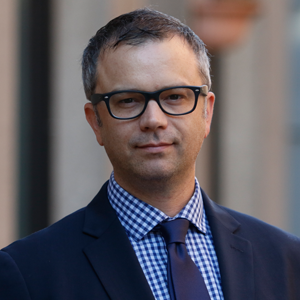
James Wright
Editorial Manager
Global Aquaculture Alliance
Portsmouth, NH, USA -
Related Posts
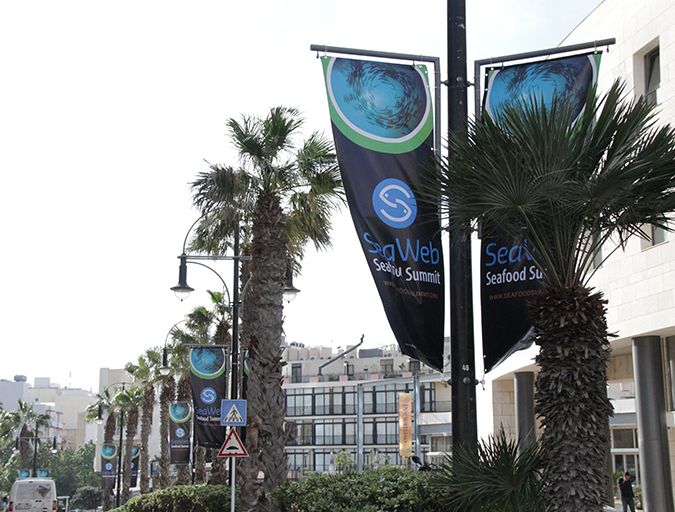
Responsibility
Offshore aquaculture, a promising yet vexing venture
The challenges of farming fish in U.S. federal waters were the focus of a panel discussion at the SeaWeb Seafood Summit in Malta. Despite recent policy updates, U.S. aquaculture chiefs oversee an industry with high barriers for entry.
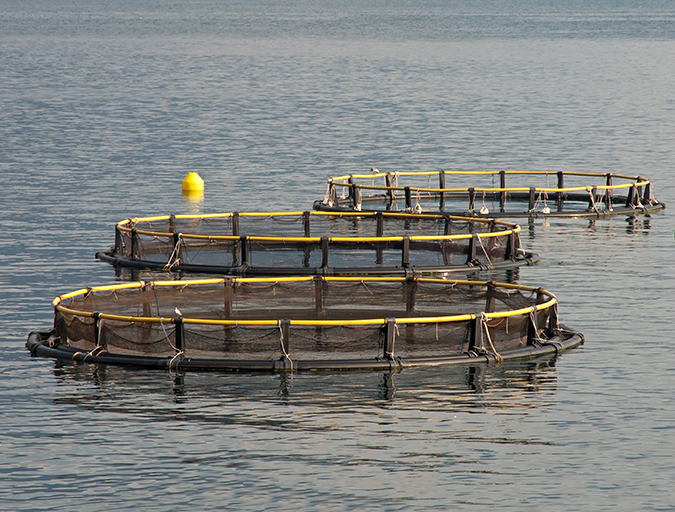
Intelligence
Rubino, Knapp lay out ‘political economics’ of U.S. aquaculture
Michael Rubino and Gunnar Knapp list key reasons why U.S. marine aquaculture has been limited to a scale far below its vast potential.
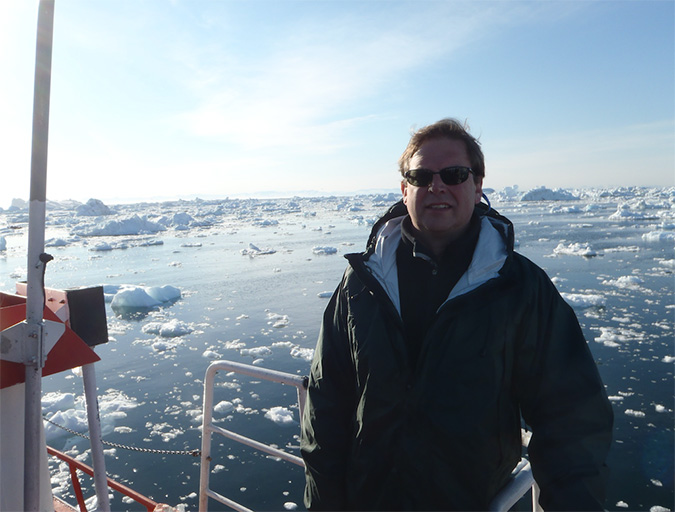
Innovation & Investment
Aquaculture Exchange: Sebastian Belle
The executive director of the Maine Aquaculture Association talks to the Advocate about the diverse and growing industry in his state (oysters, mussels, kelp, eels and salmon) and how aquaculture should be used as a rural development tool.
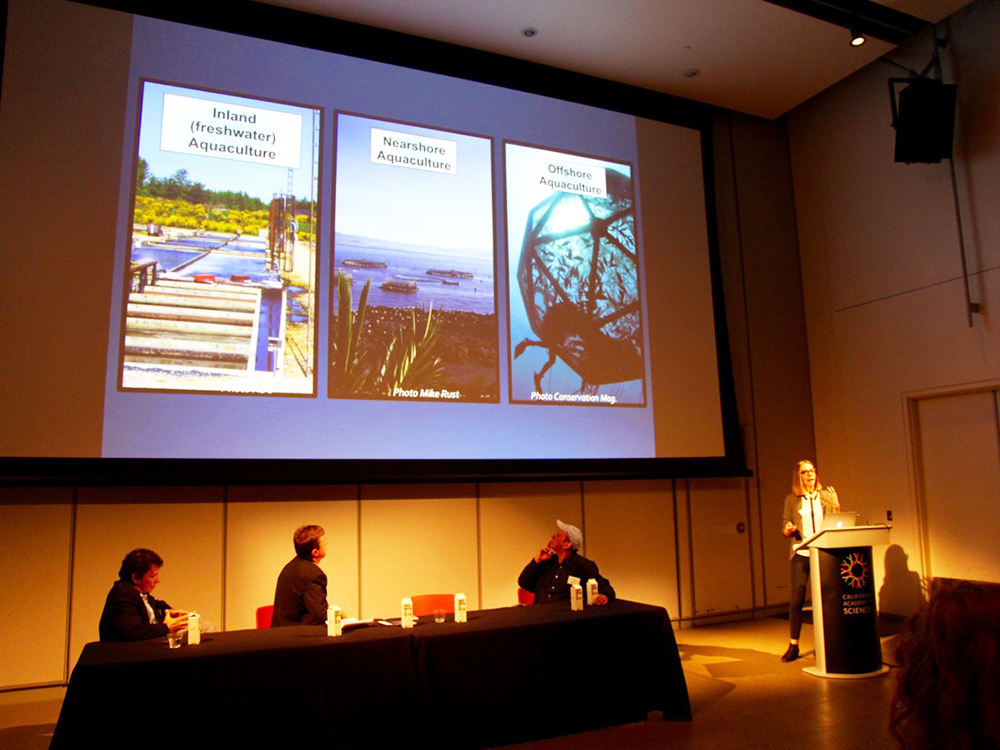
Responsibility
Going deep on offshore aquaculture
Open-ocean aquaculture, the “new kid on the block” in the rapidly growing aquaculture industry, was examined at a California Academy of Sciences event. New contributor Twilight Greenaway reports.



